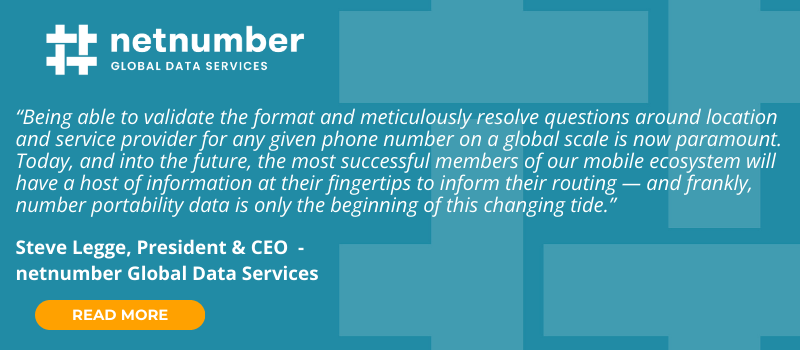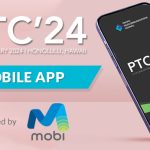
Why the Global Mobile Ecosystem Needs Number Portability Data to Combat Fraud
It’s long been said that “you can’t take it with you”. Well, in the highly mobile world, many have made it their mission to enable a global technological ecosystem that can help us take anything, anywhere. Today, we take the world at our fingertips everywhere we go, and subsequently, our digital footprint and identity, both of which are now firmly attached to our hips (or, more accurately, sitting in our pockets).
Of course, in an era where your digital identity is so closely associated with who you are, it’s become clear that our phone numbers are held just as closely to us as our other long-standing identifiers: our names, addresses, emails, you name it. A phone number is no longer just a string of numbers — and taking it with us means everything.
Here we have the origins of the porting problem.
Why Porting, Why Now?
Let’s start with a question: How many of you reading this right now remember the phone landline for the house you grew up in or the phone number of your best childhood friend? Many carry this information with them across time and space — and that clearly shows the sticking power of a phone number as a memorable identifier.
Notably, now that landlines are all but obsolete and we store all contacts on our devices, the number has become less important itself. Still, the ease with which they help us keep our connections and social circles intact has only become more important. Digital disruption isn’t an option when our entire lives are tied up in mobile communication, so switching numbers (and then following up with all your contacts to notify them and doing the runaround of shifting your entire mobile world to a new spot) becomes a big task. Not to mention, aggressive CSP competition across the globe — especially in markets with high numbers of prepaid SIM cards — is driving up the rate of carrier changes. This means number portability rates can exceed 50%.
In short: We have a mobile landscape that is witnessing widespread phone number porting activity. Of course, the catalysts for keeping the same number mentioned above don’t even scratch the surface of the more nefarious reasons why porting is so popular — but suffice to say, portability has become a problem for providers.
Porting, or the act of switching service from one mobile carrier to another while retaining the same phone number, is now a mainstay in modern communications. So, why is this important to discuss?
Portability Exploited as a Tool for Fraud
In the past, the mobile ecosystem could trust that routing would be accurate and reliable if it was accomplished through the use of number prefixes like National Destination Codes. Now, with porting becoming so popular, the communications ecosystem can no longer trust that a given number’s geographic code is accurate. After all, the number could have been ported, which generally means the user could be anywhere in that number’s country of origin.
On the other hand, portability also puts providers at greater risk of enabling fraud in their ecosystem. Number port-out scams, where a fraudster hijacks a phone number and switches it to a new carrier to impersonate a real user, are dangerous — and popular (you can learn more about that from the FCC here). This kind of attack weaponizes the trust we have in our own digital identity (and the assumed nature of porting from the perspective of mobile providers), using it against us to gain access to our most precious personal information.
It’s clear that inaccurate and unreliable routing spells disaster for the profitability, trust, efficiency, customer experience, and reputation of any organization in the mobile ecosystem, which means this knowledge gap created by porting is a threat. Still, over 110 countries and territories have mandated the implementation of number portability — and each has its own unique regulations, commercial agreements, and technical requirements. This means that closing gaps with comprehensive solutions is a complex endeavor.
Nevertheless, it’s clear that CSPs, MNOs, and enterprises need a more accurate data point that can help them overcome the barriers created by the new state of phone numbers and help call and message routing remain reliable. So, let’s talk about solutions.
Solving for Safer Portability
At the end of the day, data is our best ally in the fight against porting challenges. However, not just any data will do. MNOs and CSPs need the most accurate, up-to-date, and granular data. Vetting and validation must occur before messages and calls can be routed, which means providers need to have a system of triangulation in place. They must have access to an assortment of any phone number’s related data elements to help them more accurately determine that number’s properties and map it to a carrier. In essence, it’s doing more in-depth due diligence.
Number portability data alone isn’t complete enough to enable comprehensive fraud prevention. What about phone numbers that aren’t ported, both in countries where number portability is operational and in the rest of the world where it isn’t yet? Robust code range information (also known as number range data) helps draw the other part of the picture. For this, the netnumber Services Registry (nnSR) is the only authoritative registry for message routing in North America, helping the ecosystem protect itself against fraud by using granular information for hundreds of millions of phone numbers.
A tool that delivers this kind of phone number intelligence data will be key to the mobile ecosystem’s routing viability and anti-fraud measures. Being able to validate the format and meticulously resolve questions around location and service provider for any given phone number on a global scale is now paramount. Today, and into the future, the most successful members of our mobile ecosystem will have a host of information at their fingertips to inform their routing — and frankly, number portability data is only the beginning of this changing tide. The efficient, successful, and safe communications of today and tomorrow will depend on data, so every operator and provider needs to know where they’re getting theirs — and how to use it.
About the Author:
Steve Legge
President & CEO
netnumber Global Data Services
As CEO and President of netnumber Global Data Services, Steve Legge is at the helm of the company’s strategic operations and ongoing evolution. He accomplishes this with keen leadership insights garnered across a career that spans more than two decades. Throughout these 20+ years, Steve has held senior executive management and technical positions in the telecommunications, broadcast, and satellite industries in both the U.S. and Australia.
Steve initially joined NetNumber, Inc. as Vice President of Corporate Development in November 2013, where he led the company’s global partner and business strategies. He then served as the company’s Chief Operating Officer, remaining instrumental in the company’s highly successful agile transformation and strategic transition to cloud-native and 5G solutions, setting the stage for the next phase of growth within both NetNumber and netnumber Global Data Services.
Prior to joining NetNumber, Steve was Vice President of Telecom and Space Systems for VT iDirect, Inc., a Virginia-based satellite communications technology provider. He has also served as the Manager of Global Business Development for the Satellite Solutions group at Cisco.
Before relocating to the U.S. in 2008, Steve was the Co-Founder and Chief Operating Officer at SP Telecommunications, a national voice and broadband carrier in Australia, now TPG Telecom.








